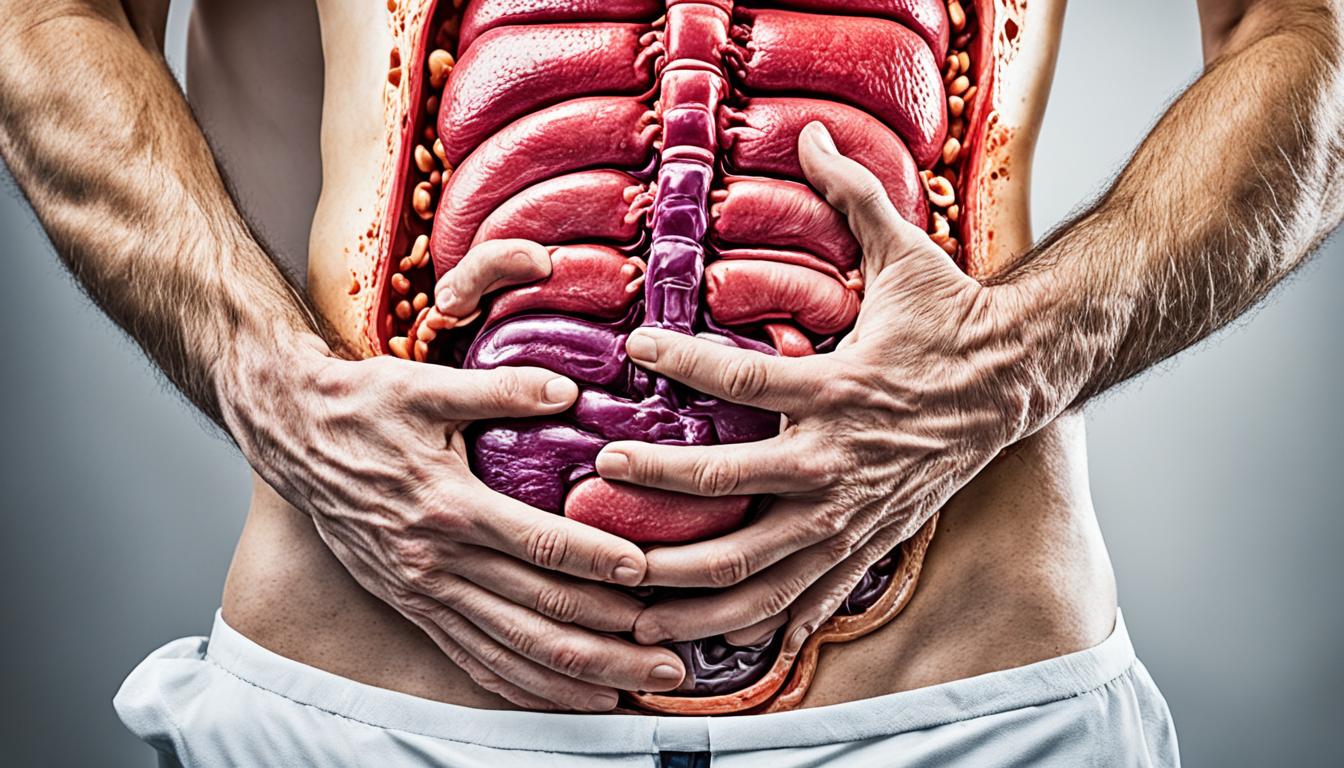Intestinal obstruction is a tough condition. It happens when things in the gut can’t move properly. This can lead to serious issues like the gut tearing. Quick diagnosis and treatment are key. They prevent more damage and keep the patient safe.
Knowing the signs of intestinal obstruction is important. These signs include stomach pain, throwing up, and not being able to go to the bathroom. Quick testing like X-rays, ultrasounds, and CT scans helps find the blockage. This helps doctors know where it is and why it’s happening.
At Vinmec Hospital in Thailand, we’re experts in dealing with intestinal blockages. Our team uses the latest tests and treatments. We aim to give top-notch care to everyone with this problem. This makes sure every patient gets the best shot at getting better.
Key Takeaways:
- Intestinal obstruction happens when the gut can’t process stuff, which may cause it to tear.
- Fast action is key to stopping more harm and keeping the patient healthy.
- Watch for signs like stomach pain, throwing up, and no bathroom visits.
- Tests like X-rays and CT scans help find the blockage’s cause and place.
- Vinmec Hospital in Thailand uses cutting-edge tests and treatments for intestinal blockages.
Diagnosis and Examination of Intestinal Obstruction
Diagnosing intestinal obstruction means checking the patient’s symptoms carefully. Doctors also do thorough exams. They want to see how serious it is. Common symptoms are stomach pain, throwing up, and being unable to go to the bathroom.
When doctors check you, they press your stomach to feel for swelling. They also look for any painful spots. This helps them tell what might be wrong inside you. They might even check for lumps near your stomach that could be a sign of a problem.
Another test they might do is a rectal exam. This is when they check inside your bottom. It can tell them if there’s blood or other issues that might be causing the blockage.
Imaging tests are very important for finding out more. These include x-rays, ultrasounds, CT scans, and MRIs. They let doctors see your insides clearly. These tests can show where the blockage is and how bad it is. They can also show if there’s any fluid where it shouldn’t be.
Diagnostic Methods for Intestinal Obstruction
| Diagnostic Method | Description |
|---|---|
| X-rays | Used to visualize the abdomen and identify the location and cause of intestinal obstruction. |
| Ultrasound | Non-invasive method that uses soundwaves to create images of the abdominal area and assess the extent of the obstruction. |
| CT Scan | A more detailed imaging technique that provides cross-sectional images of the abdomen, allowing for precise identification and evaluation of the obstruction. |
| Magnetic Resonance Imaging (MRI) | A non-invasive imaging method that uses magnetic fields and radio waves to generate detailed images of the abdominal area, aiding in the diagnosis of intestinal obstruction. |
With these tests, doctors can figure out what’s wrong with you. This is really important. It helps them know how to treat you properly. They want to fix the real cause of the problem.
Treatment Options for Intestinal Obstruction and Stem Cell Therapy
The treatment for intestinal obstruction varies by severity and cause. In less severe cases, we use non-surgical treatments first. These include bowel rest, drinking fluids, and medications to lessen symptoms. The goal is to get rid of the blockage and get the bowel working normally again.
If the obstruction is severe or doesn’t get better with non-surgical methods, surgery might be needed. A surgeon may clear the blockage or fix any harmed parts of the intestine. The exact surgery needed depends on where and how complicated the obstruction is.
Recently, stem cell therapy has become a new way to treat intestinal blockages. The Vinmec Central Park International General Hospital in Thailand is a leader in this therapy. Stem cells can become many different cell types, including those in the gut. This makes stem cell therapy a great option for healing and regenerating damaged intestine tissues.
Stem cell therapy’s goal is clear: to help the intestine work normally again and reduce symptoms. For some, it can offer new chances to fight this tough condition. It stands as a possible option for eligible patients, giving them new hope.

